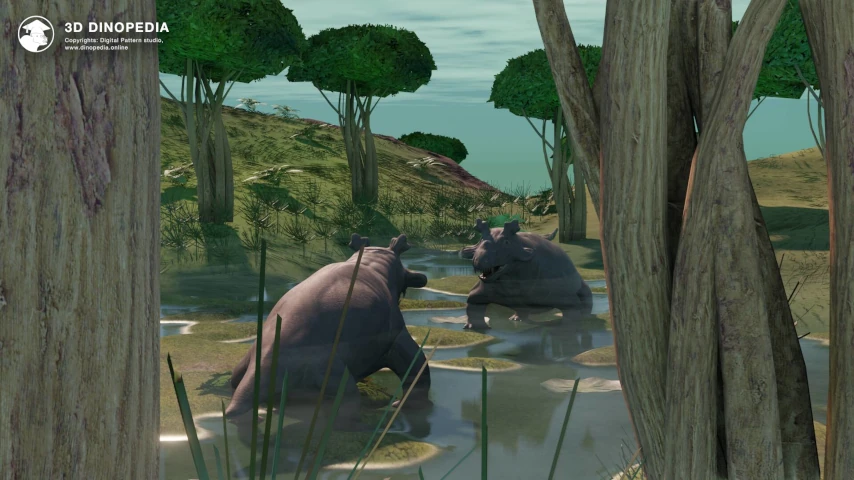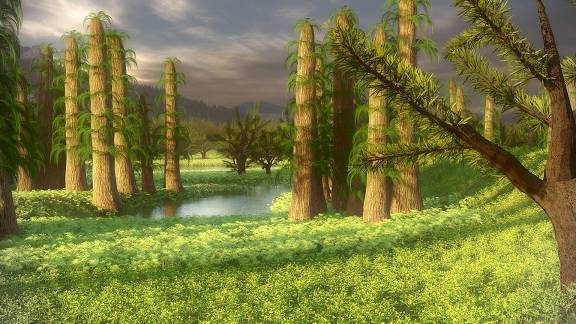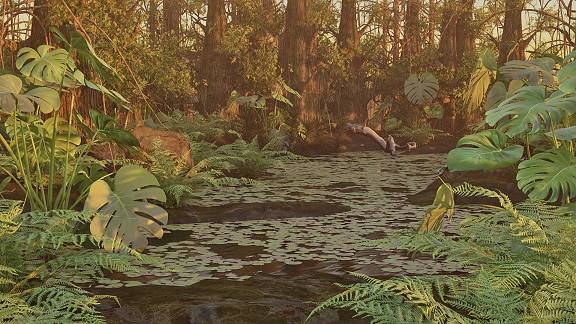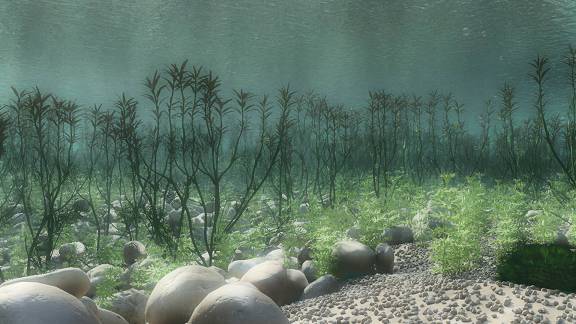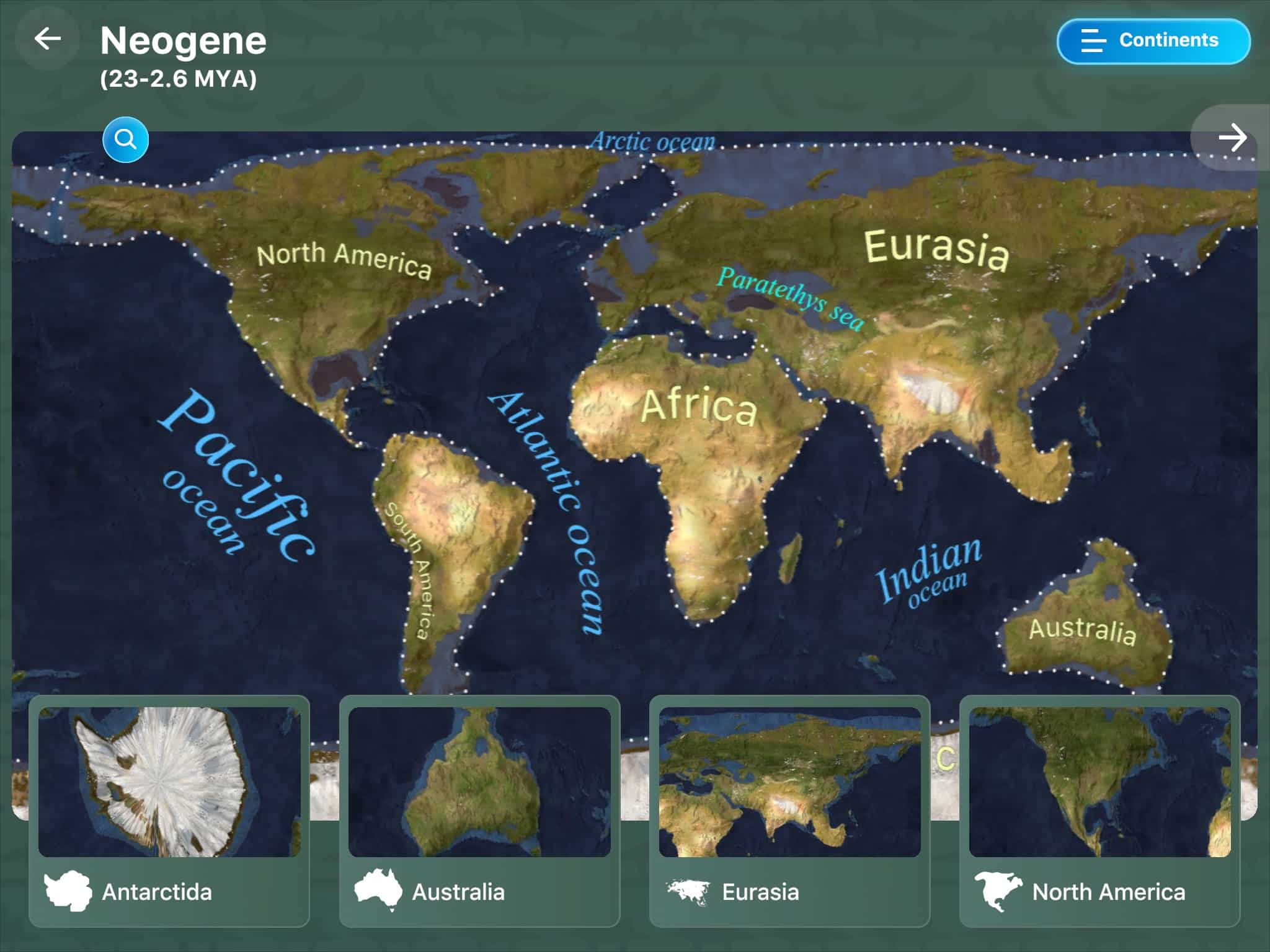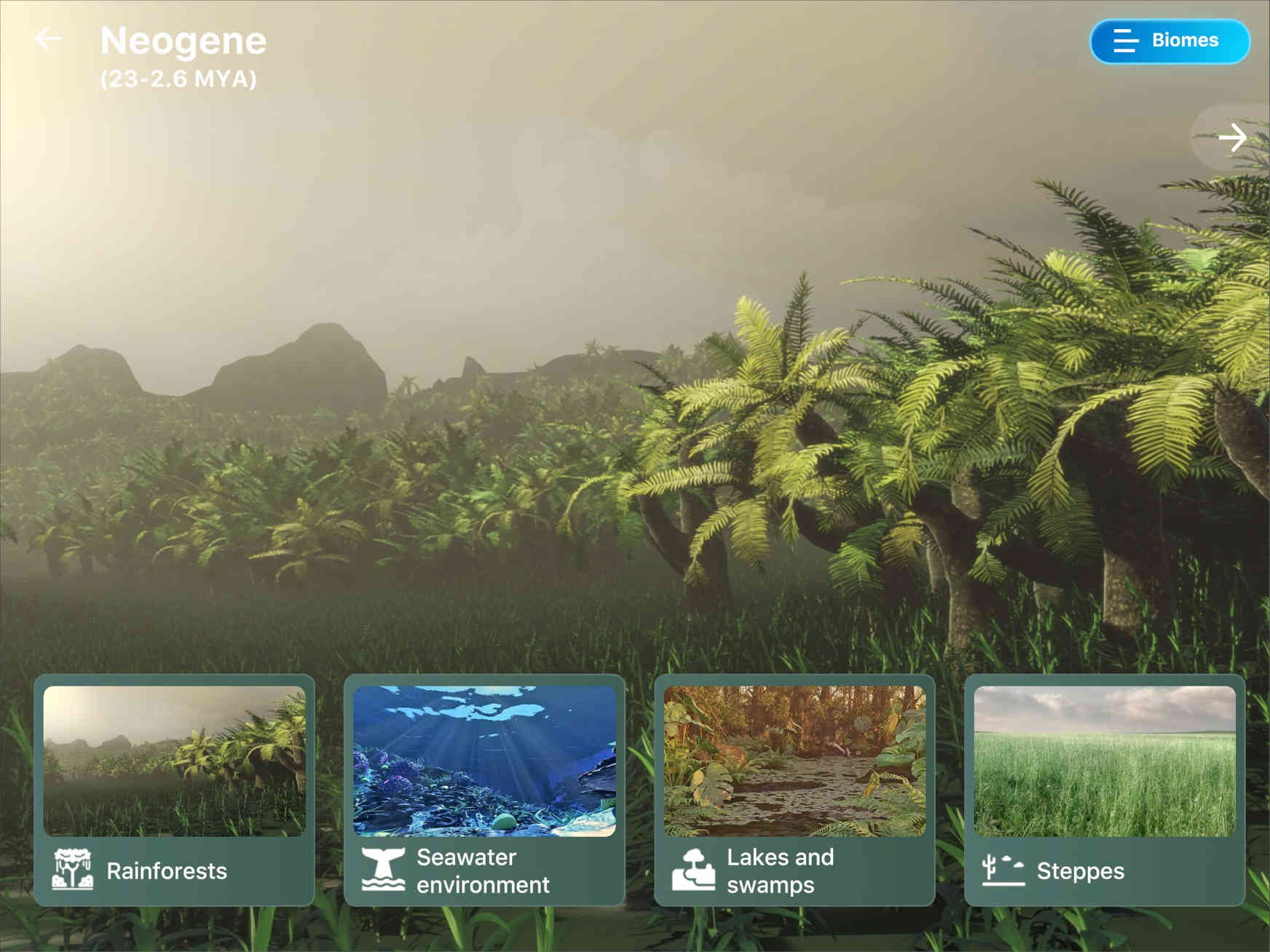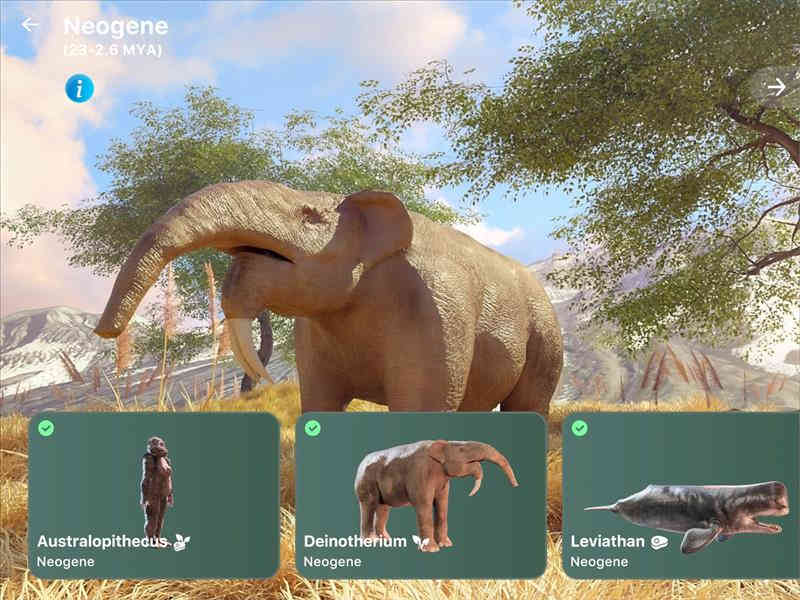Marine environment
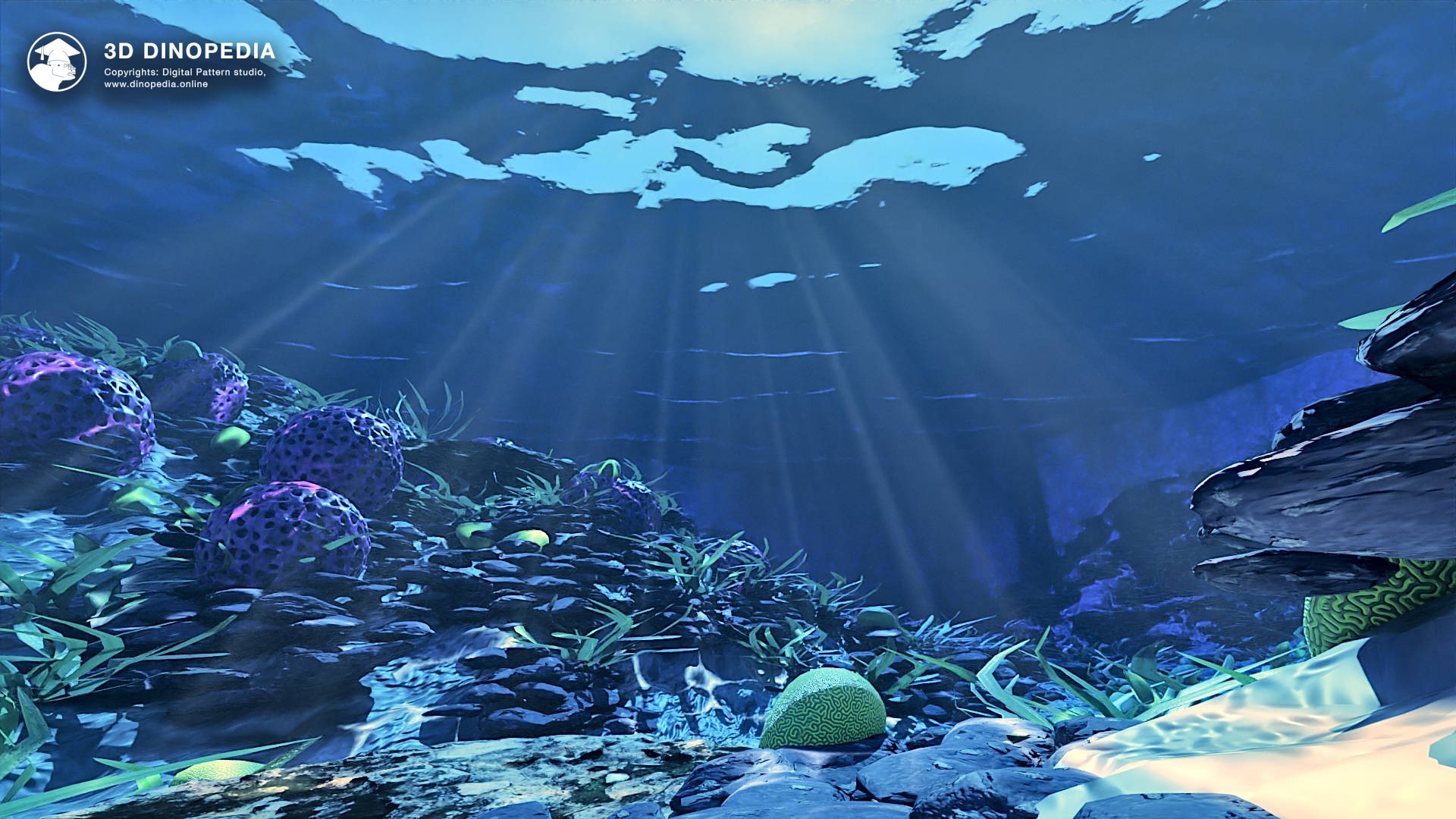
The seas of the Permian period continued to delight the eyes (no matter how many there might be) of any ancient sea creature with a variety of peculiar shapes and bright colors.
The marine and oceanic flora remained true to the traditions of the entire Paleozoic, mainly based on red algae (Ungdarella) and green algae (Ivanovia, Calcipatera), as well as their bacterial counterparts - cyanobacteria. The landscape was also complemented by stationary animals, such as corals, which formed entire underwater cities - reefs, stalked echinoderms sea lilies (Crinoidea), and buds (Blastoidea).
The Permian period was the final act for many Paleozoic marine animals. But they were unaware of this, continuing to lead a regular, sometimes leisurely, sometimes bustling life. Rare, inconspicuous trilobites crawled along the bottom. Some eurypterids, or sea scorpions, continued their hunting activities, others acted as sea scavengers, but their main roles in marine ecosystems were definitely in the...
The marine and oceanic flora remained true to the traditions of the entire Paleozoic, mainly based on red algae (Ungdarella) and green algae (Ivanovia, Calcipatera), as well as their bacterial counterparts - cyanobacteria. The landscape was also complemented by stationary animals, such as corals, which formed entire underwater cities - reefs, stalked echinoderms sea lilies (Crinoidea), and buds (Blastoidea).
The Permian period was the final act for many Paleozoic marine animals. But they were unaware of this, continuing to lead a regular, sometimes leisurely, sometimes bustling life. Rare, inconspicuous trilobites crawled along the bottom. Some eurypterids, or sea scorpions, continued their hunting activities, others acted as sea scavengers, but their main roles in marine ecosystems were definitely in the...
 3D BIOMES
3D BIOMES
